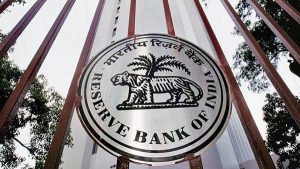Prompt Corrective Action (PCA) Framework: RBI

The Reserve Bank of India (RBI) has announced a revised Prompt Corrective Action (PCA) framework.
- The PCA framework enables supervisory intervention of RBI over Banks at an appropriate time and ensures effective market discipline.
- The framework applies to all banks operating in India, including foreign banks operating through branches or subsidiaries based on breach of risk thresholds of identified indicators.
- However, payments banks and small finance banks (SFBs) have been removed from the list of lenders where prompt corrective action can be initiated.
- The new provisions will be effective from January, 2022.
- Capital, Asset Quality and Capital-To-Risk Weighted Assets Ratio(CRAR), NPA ratio, Tier I Leverage Ratio, will be the key areas for monitoring in the revised framework.
- However, the revised framework excludes return on assets as a parameter that may trigger action under the framework.
Invocation of PCA: - The breach of any risk threshold may result in the invocation of the PCA. Stressed banks may not be allowed to expand credit/investment portfolios.
- However, they are allowed to invest in government securities/other high-quality liquid investments.
- In the case of a default on the part of a bank in meeting the obligations to its depositors, possible resolution processes may be resorted to without reference to the PCA matrix.
Prompt Corrective Action:
- PCA is a framework under which banks with weak financial metrics are put under watch by the RBI.
- The RBI introduced the PCA framework in 2002 as a structured early-intervention mechanism for banks that become undercapitalised due to poor asset quality, or vulnerable due to loss of profitability.
- The framework was reviewed in 2017 based on the recommendations of the working group of the Financial Stability and Development Council on Resolution Regimes for Financial Institutions in India and the Financial Sector Legislative Reforms Commission.
- Objective: The objective of the PCA framework is to enable supervisory intervention at an appropriate time and require the supervised entity to initiate and implement remedial measures in a timely manner, so as to restore its financial health.
- It aims to check the problem of Non-Performing Assets (NPAs) in the Indian banking sector.
- It is intended to help alert the regulator as well as investors and depositors if a bank is heading for trouble.
- The idea is to head off problems before they attain crisis proportions.




